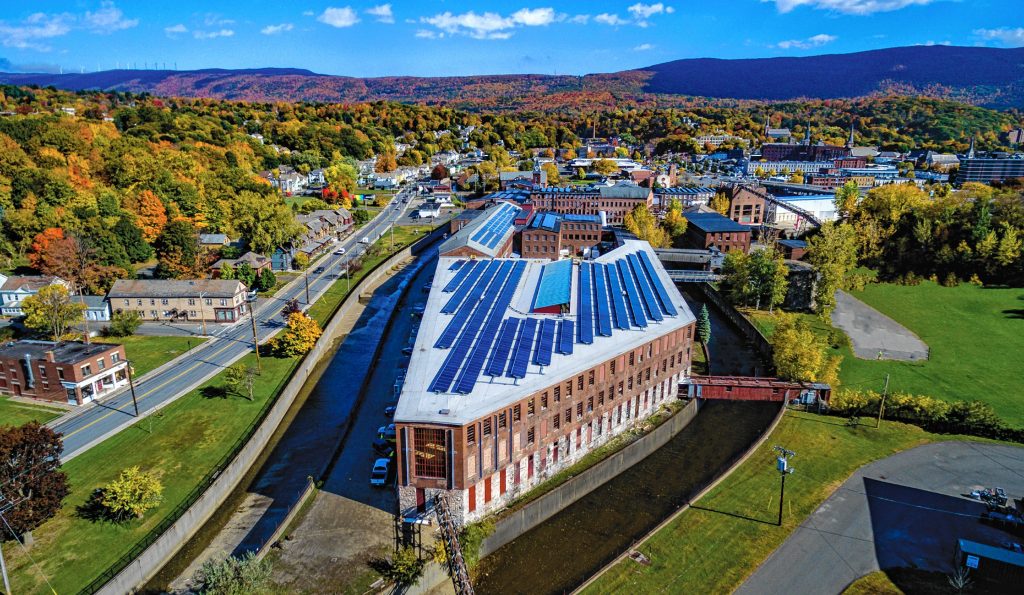If a white cube is your comfort zone for viewing contemporary art, then the recent expansion of the Massachusetts Museum of Contemporary Art (MASS MoCA) pushes well outside the box. “Building 6” is the modest name of an ambitious project that adds 130,000 square feet to nearly double the museum’s gallery space and augments other institutional amenities such as new art fabrication workshops and support facilities for performing artists and music festivals (which loom large in MASS MoCA’s innovative programming). But Building 6 also doubles down on its roots as a nineteenth century mill. Instead of aiming for sleek, slick, airbrushed surfaces to display art, renovations by the Cambridge-based architectural firm Bruner/Cott & Associates go rough-hewn with red brick, revel in natural light from rows upon rows of windows, and punctuate the repeating rhythm of multiple metal columns with the irregular zig and diagonal zag of open stairwells and bridges.
Industrial history burrows deep into the remnants of original architecture, where millworkers once wove and dyed material for Union Army soldiers’ uniforms and later generations manufactured pieces for precision electronics. But a series of strategic interventions transform the three-story post-and-beam structure into a museum to house and hold cutting-edge contemporary art.
Some architectural interventions loom large. A soaring two-story window faces west, towards the Berkshires and Taconic Mountains, above an end of the building where two waterways merge together and land comes to a point. The central Light Well, topped by a skylight twenty feet wide and one hundred and forty feet long, brings a swath of natural light into the heart of the building, spanned by connecting bridges.
Other renovations open up or enclose the original space to accommodate particular needs. Installing monumental sculptures by Louise Bourgeois, for example, required removing walls and windows to bring work in by crane, reinforcing floors to support thirty tons of white marble, and replacing floor boards with rough sub-flooring, to better match the aesthetic ethos of Bourgeois’s studio. In contrast to the heavy marble, however, other artwork is immaterial and illusory, which places quite different demands on architecture. James Turrell’s immersive environments, for instance, need an enclosed inner sanctum, where light can be completely controlled and color can be carefully modulated.
So while Building 6 dazzles with dramatic angles, textured surfaces, and expansive interiors — I guarantee you’ll see people snapping selfies with the architecture as well as the artworks — ultimately what counts is what’s displayed. The expansion creates “more room to show more art for longer,” notes MASS MoCA director Joseph Thompson. Building 6 houses a series of changing exhibitions plus long-term installations and ongoing collaborations with artists Laurie Anderson, Jenny Holzer, and James Turrell, the Louise Bourgeois Trust, the Robert Rauschenberg Foundation, and the estate of Gunnar Schonbeck.



